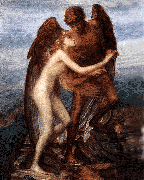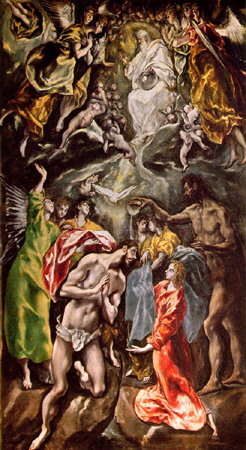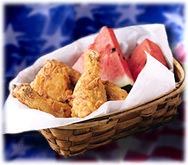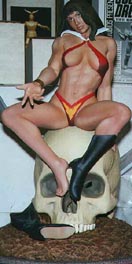Purity among the Essenes
and the

Nephelides
(Wabash Students)

|
Purity among the Essenes
and the
|
||
 |
Nephelides
(Wabash Students) |
 |
The Nephilim were the Book of Enoch's particular motive to action, the vehicle through which Enoch is allowed to ascend to heaven and kneel at the hem of God's robe. The Nephilim were Giants created from the unholy union of Angels with human women and grew vicious and terrible on the earth causing humanity and the earth itself to cry aloud greatly for help from God. It is understood that the Nephelides (little/sons of the Nephilim Giants) were called cavemen on account of their Mithraic style ritual observance of the campus as a female Great Mother entity (alma mater). The popular conception of their early 21st century understanding of cavemen was no very pleasant in terms of bathing habits. However, with the advent of 'modern' plumbing techniques, group showering facillities were available to all students. But don't think that mass ritual bathings were unimportant. A large Olympic-sized bathing complex was set up for special events in the Wabash calendar, perhaps Homecoming (although no texts exist to support that theory).
 |
The aquatic cleansings of ritual impurity and sin were no doubt derived from the baptismal practices of John the Baptist (who is speculated to have lived with the Essenes) through Presbyterian doctrine.
This painting by El Greco illustrates the Essenes' view that the holy host was reachable through specific mental awareness. At wabash college, the host of God's angels drink as much as the students do and are thus prone to specific acts of acts of michief such as stealing car keys and misplacing wallets. |
 |
They were strict vegetarians who would drink the sacred wine (unfermented grape juice) rather than poison themselves with alcohol. The members of the congregation of the holy ones of the most high were privy to eat the pure meal. While we're not exactly certain what constituted the Qumran pure meal and how it was prepared, we know that novices and the uninitiated were forbidden to partake of it. We have reason to suspect that the students would gather at their communal dining halls to partake of the pure meal of fried chicken, watermelon, bread rolls, spare ribs, collard greens, chitlins, and milk, which had a long history of folk usage in that part of the N. American continent.

Unsurprisingly, women were unclean far more often than men by default. Women were subject to a menses period and were thus ritually impure for seven days out of every lunar cycle. 4QTohorot explains:
|
A woman must not mingle with the pure so as to not infect
the camps. The Blood of a menstruant is reckoned as a flux (unclean).
|
Accordingly, once a woman is pregnant, any man who has sex with her is also impure (Apion 2.202). This seems slightly off since a woman would have not have been menstruating any longer, until we remember that they felt that sex on the whole was a detriment to the enlightenment process, and we've seen how dedicated they were to enlightenment. Women were thought to be incapable of fidelity and viewed as disgusting creatures of ultimate lasciviousness.
 |
 |
 |
Women were considered very unclean to the Essenes, and it must have been because of such similar reasons that Wabash College remained all male since its founding in 1832, when seven Presbyterian Ministers kneeled down in the forest's snow blanketed evening. There were some women teachers and assitants, but they were not allowed to participate as full members of the acolyte community.
|
Essene purity rituals were of the utmost concern, according
to Josephus, as they would bath in cold water before meals. It would be
very cold, especially considering the desert at night.
|
While it is not proven that they bathed before every mea in the Qumran texts, they certainly took the purity standards in every facet of their lives: their food, women, storage containers, funeral observances, sacrifice, clothing, and social standards.
|
Vermes tells us the Manual of Discipline ordained that the initiate "shall be made clean by the humble submission of his soul to all the precepts of God" but only after "his flesh is sprinkled with purifying water and sanctified by cleansing water". That cleansing water, at its most potent, was the cause for the sacrifice of the Red Heiffer, a process detailed in 4Q276 :
|
[And the priest wears the garments] in which he is not ministering in the sancutary... renders the garments guilty. And he slaughtered [the] heifer before Him. He shall carry her blood in a clay vessel which is [not brough=t near the altar. And with his finger he shall sprinkle some of her blood seevn [times towa]rds the front of the tent of meeting. And he shall cast the cedar wood, [the hyssop and the scarlet ma]terial in the midst of her burning. [And he who burns (it), a man who is clean of every corpse uncleanliness, =shall wash his clothes and gather] up the ashes of the heifer [ansd shall de]posit them to be kept [by the children of Israel for teh water for uncleanliness, for the removal of sin. And] the priest... |
At Wabash, the ritual offering of blood is remembered at football games when the crowd would chant "Blood make the grass grow greener, greener" repeatedly. Animal sacrifice must have taken place as part of the religious science program. A building full of meticulously dissected cats (a feminine animal) and other animals organs such as cow hearts and lambs brains (perhaps due to the New Testament Gospel metaphor). There were also a variety of chemicals present leading us to believe that they were preparing ritualized chemicals that may have had a part in their communal worship on Thursday mornings.